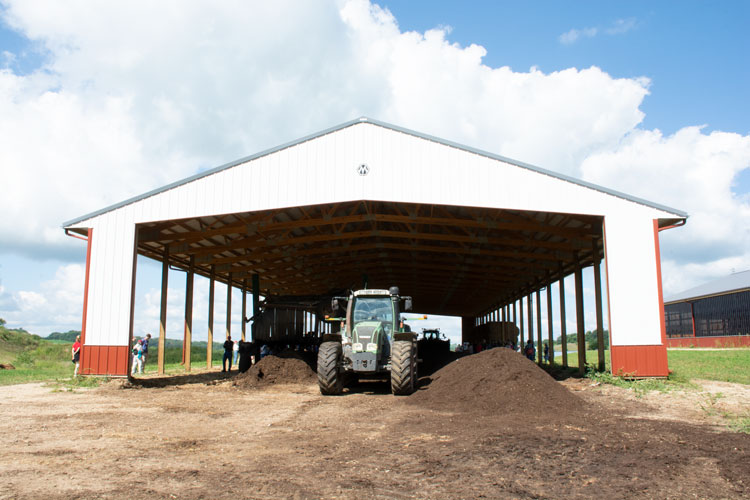
Jeff Endres of Endres Berryridge Farms started composting manure six years ago. Their composting system has gone from basic beginnings to the more advanced system it is today. Endres shared a few details about his manure composting process at the Yahara Pride Farms annual meeting held in DeForest, Wis.
Endres farms with two brothers near Waunakee, Wis. They milk 600 cows, and manure from the herd is trucked to a local community anaerobic digester. Separated solids return to the dairy and are mixed with manure scraped from the freestall barn and bedding pack material that comes from their heifer barns.
The manure is emptied from the spreader and placed in pyramid-shaped windrows. Some of the windrows are under a covered roof, while others are located on a pad outdoors. “We can make it work in both places,” he said, noting that a lot of rain can slow down composing in the outdoor windrows.
They build one new windrow each week, and remove one windrow each week, working on an eight-week cycle. Eight weeks is the amount of time it takes for the manure to finish composing.
To aid in the process, the manure is turned two or three times each week. They maintain a temperature of 125°F to 160°F within the windrow, even through the cold winter months, Endres said.
Once the manure is composted, it is loaded back onto the spreader and taken out to the field, either to be land applied or headland stacked until weather conditions are favorable for spreading. Being able to store manure until it can be land applied is one benefit of composting.
Another benefit is that it creates a nutrient-dense product that can be transported more easily. Using current fertilizer values, Endres figures he can truck one load of compost 40 miles down the road before he loses the value of the nutrients.
On the other hand, a load of liquid manure can only be hauled 2.5 miles before the costs outweigh the benefits. “We are spending a lot of money hauling liquid manure around,” he said.
Most of their compost is used on hayfields, because Endres said the nutrient analysis of the compost fits the fertilizer needs of those fields well. They also use some on corn ground.
Endres commented on the importance of nutrient testing to make sure the manure is being applied where it is needed. “Not all compost is created equal,” he said.








